
5 minute read
Design & Build Collaboration
from SYNKD South January|February 2023
by SYNKD—Landscape design, build and maintain all on the same page

Design & Build Collaboration
SWA Group Goes Over & Above to Integrate Maintenance Teams into the Development of An Urban Park
Project Details:
Cost: $1.5 million | Build Time: 18 months | Size: 2 acres
A project by SWA Group demonstrates how infrastructure can be designed to enhance the ecological value of a city and the lives of its inhabitants. The international landscape architect firm led the transformation of a former brownfield site on flood-prone land into an urban park for a community in Conway, Arkansas.
Using local and federal grants awarded to the city, SWA designed and coordinated with Crow Group to build the two-acre urban park named for Martin Luther King Jr. with a central flexible green space, pollinator gardens, a permeable plaza, an amphitheater and a children’s playground, which is connected by a quarter-mile walking path.
In addition to its recreational uses, the park shows how low-impact development and green infrastructure ideas work with nature to manage rainwater using techniques to slow, filter, infiltrate and evaporate runoff in the area. The project made it possible to store 1.5 million gallons of stormwater runoff after rains.
SWA and engineering partner Gavin Smith used a soft approach with permeable hardscapes, vegetated living walls, bioswales and rain gardens to slow stormwater. The technique also improves water quality by utilizing a water treatment train to reduce the pollutants from urban stormwater. The treatment train sends water through the permeable paving into a series of rain gardens ending at the central bioswale, which acts as a daylit creek.
SWA team member and landscape designer Sarah Fitzgerald explains how they worked with the city of Conway and local native plant society, the Arkansas Master Naturalists, in choosing suitable plant materials for the location. An estimated 80 percent of the plants used are native.
“The city of Conway was pretty up front with us when we involved them in the design process early on,” she says. “The thing that hopefully will make this project successful in the long run is that the local native plant society weighed in on the planting palette and is invested in the park’s maintenance success.”

Native plants were selected to enhance the park and provide benefits to pollinators and wildlife, optimize carbon sequestration and work with their aesthetic goals. Keeping in mind that maintenance crews need to understand how to take care of them to make the investment worthwhile, Sarah says her designs are flexible.
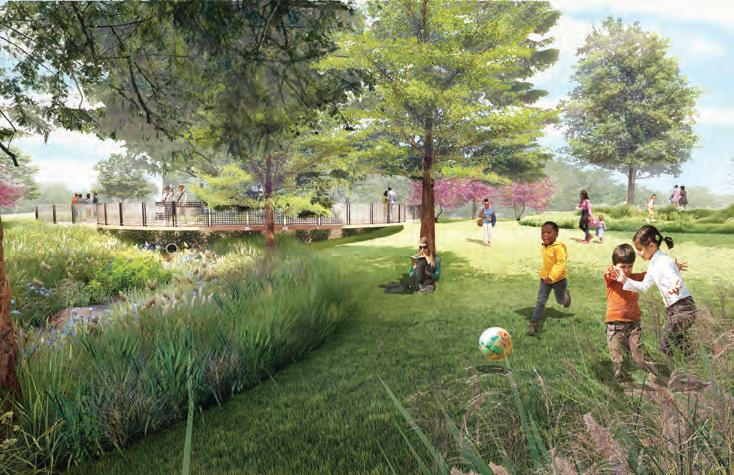
The city’s Public Works Department asked SWA to design a training manual for their public works team so they would know how to care for the native plants. The team created detailed manuals with maps of the park, where to find the plants, photos of how each one should look and how to prune them.
“We tried to create beds that mix two or three different plants, so they could fill their ecological niches as they want to,” she says. “I often feel that part of my job as a designer is to create legible frames that communicate intention, but the design is flexible enough that things can change and move.”


Sarah Fitzgerald, Landscape Designer, and Hank Thomas, Project Manager
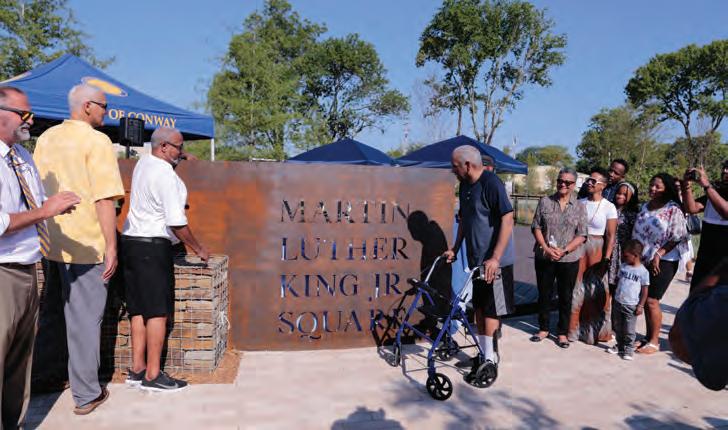

The team also developed signage for guests that highlights the native plants and explains the benefits of watershed stewardship and the low-impact designs used throughout the park. What was once unused space in Conway is now a vibrant urban park with a big ecological impact.
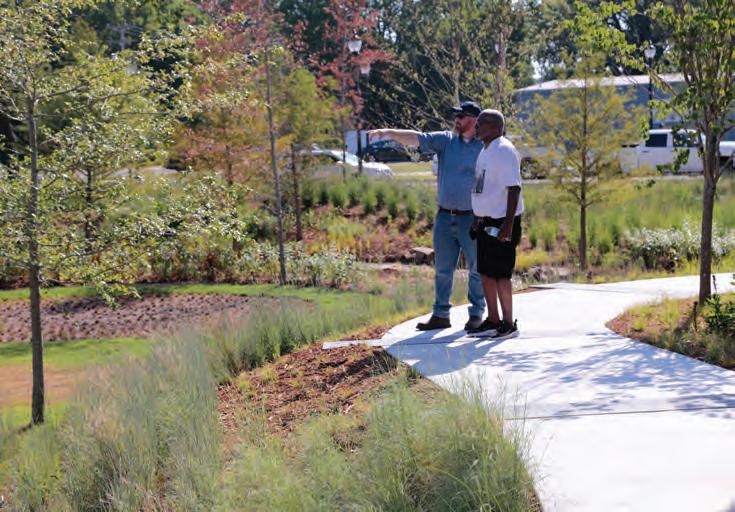
Awards (nominations, shortlist and wins):
-Texas ASLA Merit Award (2021, awarded)
-American Planning Association Arkansas Chapeter
-Achievement in Design Award
-University of Arkansas Alumni Design Awards
-City of Conway "Achievement in Design" Award
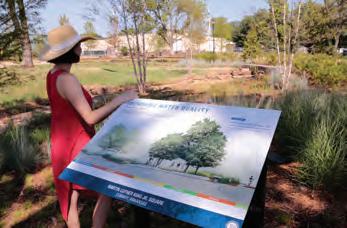
Project Details: Extended Version
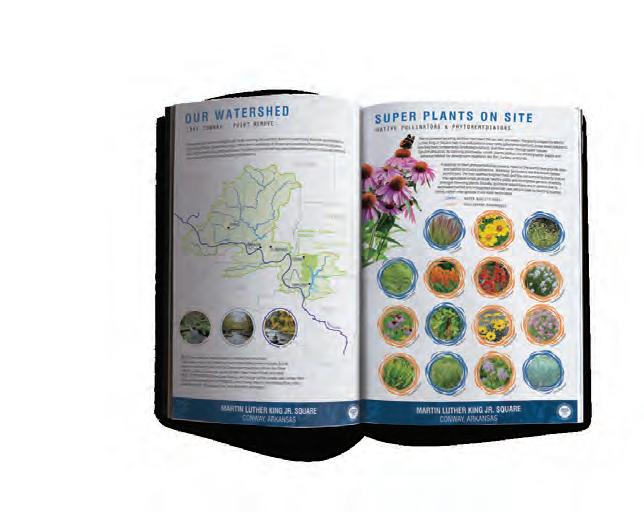
Project Objective
Demonstrate low impact development/ green infrastructure techniques in a floodprone, one-block area in downtown Conway. To educate the public about the methods and how they can enhance water quality.
Design Outcomes
1.5 million gallons of water temporarily stored during rain events. Green infrastructure techniques on display include a reconstructed daylit stream, rain gardens, permeable paving and vegetated walls.
80% of the plantings are made up of native plants
Some Standout Plants Include:
Schizachyrium scoparium–Little Blue Stem
Panicum virgatum–Shenandoah Switchgrass
Echinacea purpurea–Purple Coneflower
Amsonia hubrichtii–Arkansas Blue Star
Liatris spicata–Blazing Star Coreopsis lanceolate–Lanceleaf Coreopsis
Asclepias incarnata–Swamp Milkweed
Chamaecrista fasciculata–Partridge Pea
Lobelia cardinalis–Cardinal Flower
Achillea millefolium–Yarrow
Myrica pusilla–Dwarf Wax Myrtle
Callicarpa americana–American Beautyberry Aesculus pavia–Red Buckeye
The Team
SWA Design team:
• Leah Hales–Principal, Lead Designer
• Hank Thomas–Project Manager
• Sarah Fitzgerald–Designer
• Alejandra Hinojosa–Design Research
• General Contractor–Crow Construction Austin Foshee–Project Manager
Get In Touch With...
Sarah Fitzgerald, ASLA
Associate at SWA Group
Phone: (972) 677–2416
www.swagroup.com

![[New] “I BELIEVE IN ME”](https://assets.isu.pub/document-structure/221227182155-d6959c20bfdb65ed27377cf8fd378583/v1/d211050e2f03d173587305c8161151f4.jpeg)








